
Coastal scenery 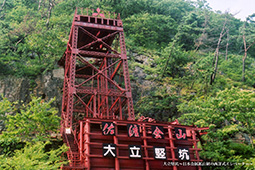
Japan’s first Western-style vertical shaft for precious metal mining 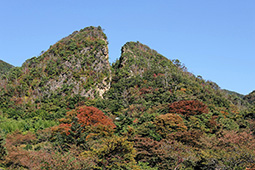
The Aikawa Gold and Silver Mine. Excavation work has “split” the mountain 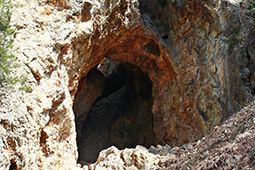
Mining work remains from the Meiji period (1868–1912) at the Aikawa Gold and Silver Mine 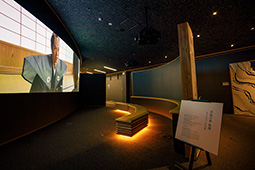
Exhibits at Kirarium Sado 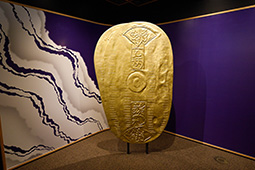
Model of a gold coin (Kirarium Sado) 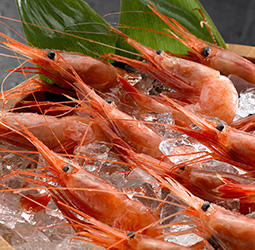
Namban shrimp 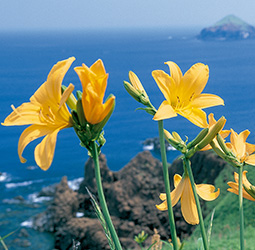
Yellow daylilies 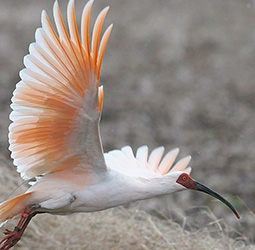
Toki (Japanese crested ibis), a Special National Monument
November 2021
The Island of Gold Seeking to Become a World Heritage Site

Development of gold and silver mines on Sado Island, the largest island in the Sea of Japan, began in earnest in the middle of the sixteenth century, and Sado was once the leading production site of gold in Japan. The island, where traces of this history remain, is now seeking to be recognized as a World Heritage site.

Sado Island lies in the Sea of Japan off the western coast of Niigata Prefecture, northern Honshu. This is the largest remote island in the Sea of Japan, with a land area of approximately 855 square kilometers. There are over fifty mines on this island, which produced large amounts of gold and silver for around 400 years. The complex of ruins is known as the Sado Island Gold and Silver Mines and has become a World Heritage candidate (listed on the Tentative List).

Usami Ryo, chief of the World Heritage Preservation Unit in Sado City’s World Heritage Promotion Division, offers an explanation of Sado Island, which flourished as the island of gold. “Sado Island first appears in documents at the end of the twelfth century as an island where gold dust could be collected. After that, large veins of gold and silver were discovered one after the next from the sixteenth through the seventeenth century, and full-blown mining operations began. Among these, the gold and silver veins at the Aikawa Gold and Silver Mine stretched out for about 3,000 meters east to west, 600 meters north to south, and down to a depth of 800 meters, and it is said that there was a combined length of about 400 kilometers of mining tunnels.”
Over about 400 years up until 1989, when the Aikawa Gold and Silver Mine finally closed, roughly 78 tons of gold and 2,330 tons of silver were mined from Sado. This gold and silver supported the finances of the Tokugawa Shogunate during the Edo period (1603–late 1860s), and after the shogunate came to an end, the mines were operated directly by the new government and played a part in the modernization of Japan.

“The Sado Complex of Heritage Mines, Primarily Gold Mines” were listed on the World Heritage Tentative List because gold mines from various periods are preserved in good condition.
On the island, in addition to remnants of the mines themselves, there are several exhibition facilities, including Kirarium Sado (Sado Gold and Silver Mine Information Facility), which explains the mines using large-scale video screens. The facilities aim to accurately convey the evolution of mining technology, as well as the history of the mines.

The Sohdayu Tunnel, a mine shaft excavated in the early Edo period, has been faithfully reproduced, using life-size models of people engaged in mining work. The nearby museum displays a variety of gold coins made at this time, including oban and koban coins. This same museum is popular for its Challenge Corner, where visitors can try to pull a 12.5 kilogram pure gold bar (worth approximately ¥90 million at today’s gold price) out of a narrow hole. Those who are successful receive a souvenir.


Usami says, “Kirarium Sado uses technology such as projection mapping that helps visitors to easily visualize how people of the time mined for ore using a variety of means.”
There is also the beautiful nature of Sado Island. Some 1,700 species of plants native to both northern and southern Japan grow here due to the effects of seasonal winds and ocean currents, and the island is referred to as a microcosm of the vegetation found on the Japanese islands. Rare species the toki (Nipponia nippon), also known as the Japanese crested ibis, lives in this rich natural environment, and is both a Special National Monument and an internationally protected bird.
Sado is also an island with abundant food resources. In 2011, the entire island was recognized as a Globally Important Agricultural Heritage System (“Sado’s Satoyama in Harmony with Japanese Crested Ibis, Japan”), together with the Noto peninsula becoming the first such GIAHS sites in Japan. The koshihikari variety of rice produced on the island is rated highly, and other local specialties include the indigenous Hige chicken and Sado beef. There are several sake breweries on the island as well, all of which produce sake of extremely high quality. The island is surrounded on all sides with ocean waters where cold and warm currents cross, making it an island of favorable conditions for fishing, and you can taste a wide variety of marine products here. The yellowtail, squid, Pacific bluefin tuna, crab, and shrimp are superb.



There is a saying: “You won’t understand Sado until you’ve come three times.” This island of gold, seeking to become a World Heritage site, is packed with charms that cannot be fully savored in a single visit.

